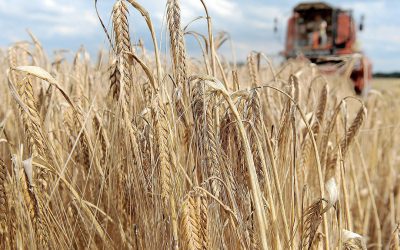Pressure on US grain merchandisers

US grain merchandisers are starting the new-crop growing season already facing significant challenges, according to a new research report by CoBank.
Low price volatility, ample grain and oilseed inventories, slow farmer selling and an anemic export programme suggest elevators are in for a difficult 2016-2017 season.
“With no relief immediately in sight, grain merchandisers will undergo further belt-tightening in the year ahead,” said Tanner Ehmke, senior economist with CoBank’s Knowledge Exchange Division. “Most grain elevators have solid balance sheets thanks to multiple years of strong revenues. Nonetheless, pressure for consolidation will likely intensify in an environment of slimmer profit margins.”
Lackluster export market
Amid ample inventories in the US and a lackluster export market, the grain and oilseed basis markets continue to remain stagnant, offering limited opportunities for elevators to profit on old-crop basis appreciation. However, grain elevators could still stand to profit by year’s end off the opportunity to buy wider new-crop basis post-harvest, says Ehmke.
Concerns about storage space
A growing concern among co-op managers is the availability of storage space this fall. High carryover stocks mean inventories will continue to build. Elevators are already holding a significant amount of farmer-owned old-crop in their facilities. Most years, inventories are about 10% farmer-owned, but many co-ops report that level at around 30% this year. Experts predict that only a major weather induced crop failure could reverse this trend, and even then supplies are expected to remain sufficient to meet demand. “Barring any significant weather-related crop losses this year, grain handlers could be tasked with managing huge farmer-owned inventories into the new-crop year and creating, at least temporarily, additional storage,” notes Ehmke.
“Whether or not farmers will be willing to sell grain, remains the co-ops’ wildcard.” The risk of a repeat La Niña event, which is normally associated with dryness in the Midwest, is another area of concern. The National Weather Service forecasts a 50% chance of another La Niña this fall. If that happens, grain companies will likely experience another season of low grain drying revenue which can account for as much as 10% of a typical co-op’s profits. With a stagnant basis market, and storage and weather concerns looming, co-op managers anticipate consolidation in the industry to continue. “Mergers, acquisitions or joint ventures could become more likely,” says Ehmke. “Efforts to reduce price risk exposure based on these headwinds will be critical for co-ops looking ahead to the end of 2016.”
[Source: CoBank]
Join 26,000+ subscribers
Subscribe to our newsletter to stay updated about all the need-to-know content in the feed sector, three times a week. Beheer
Beheer









 WP Admin
WP Admin  Bewerk bericht
Bewerk bericht